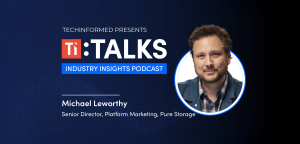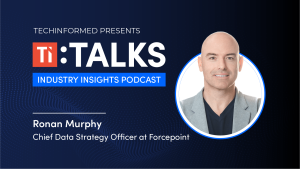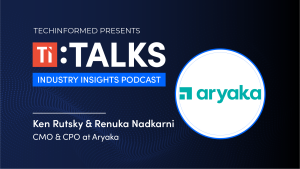

Mike Hoy, CTO, Pulsant
With a background in systems engineering and a career spanning technical support, infrastructure leadership, and cloud strategy, Mike Hoy now leads Pulsant’s technology direction at a time of considerable change in the industry. Edge infrastructure…
With a background in systems engineering and a career spanning technical support, infrastructure leadership, and cloud strategy, Mike Hoy now leads Pulsant’s technology direction at a time of considerable change in the industry.
Edge infrastructure provider Pulsant operates 12—soon to be 14—data centres across the UK, including recent acquisitions in Birmingham and Fareham.
Unlike hyperscale players, Pulsant focuses on regional connectivity and data sovereignty—key concerns for organisations looking to maintain control over where their data resides.
With strong hubs in locations such as Edinburgh and an expanding footprint beyond the Southeast, the business helps shift national reliance away from London and brings low-latency, high-bandwidth services closer to end users.
As hybrid cloud and edge computing gather momentum, Pulsant’s role has become increasingly vital, particularly as enterprises look to repatriate data from public cloud platforms and adopt more localised strategies.
In parallel, recent changes in the cloud ecosystem—most notably Broadcom’s acquisition of VMware and the move to subscription-only licensing—have created disruption for customers.
Hoy and his team have responded by adapting Pulsant’s private cloud to support those affected, positioning the business as a flexible, fair alternative in an evolving and increasingly AI-driven digital landscape.
What types of businesses typically work with Pulsant?
We’ve never focused on a single industry, though sectors like legal have featured over the years. As our focus has shifted towards co-location, connectivity, and cloud infrastructure, we’ve seen increasing interest from managed service providers (MSPs) and internet service providers (ISPs). These clients use our infrastructure to deliver services to their own customers. While we previously served mainly direct clients (around 80% five to ten years ago), there’s now a stronger presence of MSPs and carriers running platforms across our data centres.
Has AI had an impact on your business?
Not significantly yet, but it’s starting to. The recent hype has helped raise public awareness of data centres and their importance—it’s great to see mainstream outlets like the BBC discussing it. While we’re not operating 100mw hyperscale sites, the real opportunity for us lies in AI inferencing—using private data to generate insights. That private data, which clients want to keep secure, is often housed in our data centres. As AI platforms evolve and integrate with ISPs and LLMs, we expect to see increased demand for secure, connected infrastructure—which plays to our strengths.
Will this lead to new products or services for Pulsant?
Yes, it’s on our roadmap. Later this year, we plan to highlight our high-density compute capabilities—positioning ourselves as the ideal environment for emerging AI use cases. As key vendors build ready-made AI platforms, we aim to be the preferred infrastructure provider, especially when their systems need access to private, in-situ data already hosted within our facilities.
How do the recent data centre acquisitions enhance your offering for enterprise clients, particularly those outside major metropolitan areas?
There are a few important factors. The UK is relatively small, yet heavily reliant on London for infrastructure. Our goal is to shift some of that capability away from the capital. We’re already seeing momentum in Manchester and expect Birmingham to follow suit.
Our SE1 facility in Edinburgh is a key connectivity hub, and with additional sites across the country, we’re reducing dependency on London and bringing compute and networking capabilities closer to regional networks.
For enterprises outside major cities, this means access to low-latency, high-bandwidth connectivity without having to route everything through the Southeast.
It’s not just about UK data sovereignty anymore—clients are increasingly interested in regional sovereignty. They want to know exactly where their data resides, be able to access the site quickly, and understand how connectivity is delivered, including fibre routes. Our growing regional footprint supports these needs directly.
How do you feel about data centres being classified as part of national critical infrastructure?
We’ve long been involved in discussions around national infrastructure, but now there’s formal recognition from the government that all data centres fall into this category. We see this positively—it reflects how integral our networks and facilities are to supporting UK businesses.
What sustainability initiatives are you pursuing to ensure responsible data centre operations?
It’s a key focus for us. Data centres are now in the spotlight, and with the emergence of large power-hungry sites, the sustainability challenge is growing. But consolidating infrastructure into efficient data centres is far better than having individual organisations running less efficient on-prem setups.
We’ve committed to reducing our power usage effectiveness (PUE) to below 1.3 by 2030. We use renewable energy across all sites and sustainable fuels for our backup generators. We also have a Head of Sustainability to guide and ensure we meet our ESG goals.
What are your strategic priorities for the next five years?
AI will continue to shape demand. Supporting clients with infrastructure that can power AI workloads is a key focus. We’re also growing our Pulsant Private Cloud platform to strengthen our role in UK data sovereignty.
As businesses reconsider where their data resides—and begin to repatriate from the public cloud—we’re focused on enabling hybrid models and supporting those transitions. From a network perspective, as data volume and processing requirements increase, so does the need for fast, scalable connectivity. Building the capacity to meet that demand is a top priority.
How did you get started in the industry?
I initially pursued electrical engineering, drawn by a fascination with tech, but shifted into robotics and then systems. I took on various systems support and analyst roles, eventually moving into leadership positions. Over time, I’ve built and led technical teams, and today we’re managing 14 data centres across the UK.
You stepped into the CTO role last year – what’s been your biggest challenge?
A key focus has been responding to shifts in the cloud landscape, particularly around licensing changes driven by Broadcom [the end of perpetual licensing in favour a subscription-based model].
We’ve adapted our infrastructure to support clients running VMware, helping ease that transition. We’re also championing a fair and open cloud market—one where businesses aren’t locked into a single hyperscaler but can choose a mix of solutions. Alongside this, we’re ensuring our sites are ready for high-density compute to meet the rising demands of AI.
How do you see Pulsant’s role evolving through future tech cycles?
While technologies evolve, the fundamentals remain: processing, storing, and transmitting data. We continue to work closely with clients to understand their needs and align our infrastructure accordingly.
Collaboration with vendors across network and compute spaces also remains vital, understanding where technology is heading, from chip design to platform innovation, helps us stay ahead.
Speaking of cycles…outside of work, we hear you’re a cycling coach – are you any relation to Sir Chris Hoy?
Sadly, no relation—though I’d love to claim I taught him everything he knows! I’m passionate about both cycling and motorcycling, but coaching cycling is what keeps me grounded. I started because of my son and have now been coaching kids for over 15 years. It’s incredibly rewarding to see some go on to compete nationally and internationally.
Do you find crossover between coaching and your professional role?
Definitely. Coaching is about observing, guiding, and helping others improve—often through small, incremental changes. Those principles apply just as well in business leadership, particularly in managing teams and driving continuous improvement.
How do you take your coffee?
Black and strong—it keeps me going through the day!









